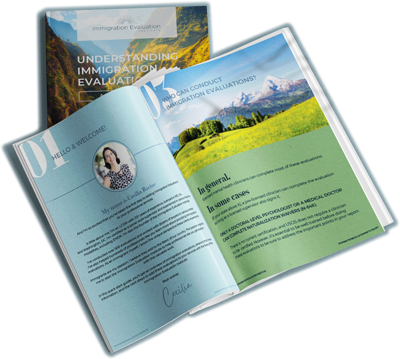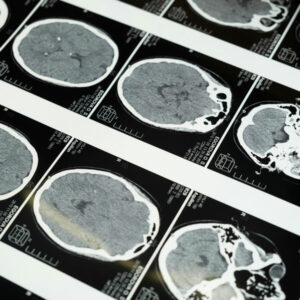What do you want to learn more about?
World Health Day 2022: Finding the Connections & Supporting All

For many people, the link between our physical health and mental health isn’t really considered too much. We tend to view – and treat – the two areas of health very separately.
But they’re more intertwined than you might realize.
This World Health Day, I wanted to highlight how our mental and emotional health can directly impact our physical health. Not only so we can look out for the underlying signs with clients, but so we can all work to keep ourselves safe, happy, and healthy!
What is World Health Day?
World Health Day (WHD) is a global health awareness day, celebrated on the 7th of April every year to mark the anniversary of the founding of the World Health Organisation (WHO) in 1948 and raise awareness of different health-related issues.
Each year, a theme is selected to highlight a priority area of public health concern globally. Amid a pandemic, a polluted planet, increasing diseases like cancer, asthma, and heart disease, on World Health Day 2022, WHO will focus on the actions needed to keep humans and the planet healthy and foster focus on well-being.
How are Physical and Mental Health Connected?
Physical health problems significantly increase our risk of developing mental health problems and vice versa. Research shows that people with mental health problems are more likely to have preventable physical health conditions like heart disease.
This can be for a variety of reasons, including:
- Genetics: Our genes play a massive role in our overall health and likelihood of developing physical and mental health conditions.
- Low Motivation: Individuals with some mental health conditions may lack or struggle to find the motivation to care for themselves physically, including eating healthily, exercising, making and attending medical appointments, and getting enough sleep. There’s also a higher risk of substance misuse in some cases that can exacerbate physical and mental health conditions.
- Lack of Social Support: Individuals with a lack of social support may struggle to care for themselves in positive ways – both physically and mentally. This is particularly important for many clients who may be separated from close friends and loved ones.
- Less Access to Medical Help: Especially amongst marginalized and immigrant communities where there are high barriers to receiving the medical help and support they need. People with a mental illness are also less likely to receive routine exams (like blood pressure, weight, and cholesterol) that might detect symptoms of physical health conditions earlier.
- Cultural Stigma: Some groups may experience stigma around mental health conditions and may fail to get the proper support or seek treatment. While they might speak with a medical professional about their physical symptoms, without the right help for their mental health, they may become caught in a vicious cycle.
Our bodies and minds are not separate, so it’s not surprising that mental ill-health can affect the body in multiple ways.
Why is this Important to Know?
Unacknowledged, untreated, and unsupported mental health conditions can show up differently.
When conducting assessments, it’s vital we take into account a full biopsychosocial model of health and look out for subtle physical signs of health that might indicate that further assessment and support are required to help with a mental health condition.
Clients may be used to saying they are not experiencing symptoms but may also experience physical signs of stress, anxiety, or depression that they’re simply not acknowledging and getting help for.
It’s also crucial for us as professionals to know the signs to look out for ourselves and our own physical and mental health in our work. Burnout is a very real experience. Knowing how and what it might look like can help remind us to take the breaks we need to keep doing our best work.
7 Signs to Look Out For
As mentioned, physical and mental health are connected, but there are some clear physical signs that our mental health might be suffering. Here are a few to look out for in yourself and your clients:
- Experiencing sleepless nights: A pretty common one, but a mind that isn’t feeling healthy may struggle to sleep as stress, worries, and general anxiety take over.
- Feeling exhausted even though you had enough sleep: Conversely, sleeping enough or too much but constantly feeling tired or exhausted is another clear sign of a disconnect between your physical and mental health.
- Elevated heart rate, chest pains, and/or breathlessness: Whether full-blown panic attacks or a more subtle experience, stress and anxiety can wreak havoc with the heart and blood pressure.
- Loss of appetite: Any change in desire to eat food – whether more or less – is often linked to poor physical and mental health.
- Stomach pains and poor digestion: Anxiety releases the stress hormone cortisol, which causes the body to produce extra stomach acid levels. This can lead to stomach pain, nausea, vomiting, and in severe cases, stress-induced ulcers.
- Headaches and migraines: Depression can cause headaches and migraines. Research has also shown links between tension headaches and mental health disorders, including depression and anxiety.
- Getting sick more frequently than usual: Stress hormones caused by low mental health can lead to a reduced immune system, increasing illnesses such as the common cold or flu.
I’m highlighting these as everyday experiences we may often experience at one point or another. Because they’re so common, they’re also incredibly easy to dismiss as ‘just something that happens. But frequently experiencing these physical symptoms could mean it’s time to reassess where you’re at with your emotions and mental health.
A Final Note
We all want to be our best – and we all want our clients to feel their best and get the proper support, too – whatever that might look like.
Being aware of and reminding ourselves of how intertwined our overall health is can help us better read between the lines when conducting our evaluations and assessments.
It can also help remind us that we are not invincible! If our physical health is starting to suffer, it may well be time for a proper break and look after our mental health too.

I’m Cecilia Racine, and I teach therapists how to help immigrants through my online courses. As a bilingual immigrant myself, I know the unique perspective that these clients are experiencing. I’ve conducted over 500 evaluations and work with dozens of lawyers in various states. Immigrants are my passion, I believe they add to the fabric of our country.
related articles
Building Rapport with Clients in Immigration Cases
Establishing a strong therapeutic alliance is critical and challenging for mental health clinicians working with…
Invisible Wounds: The Importance of Brain Injury Awareness in Psychological Evaluations for Immigration Cases
March marks National Brain Injury Awareness Month, an essential time for mental health clinicians to…
Budget-Friendly Tips for Professional-Looking Photos
As therapists dedicated to helping individuals through crucial immigration processes, presenting a professional image is…
Join the Free
Immigration evaluation
therapists facebook group
Are you a therapist that conducts immigration evaluations?



